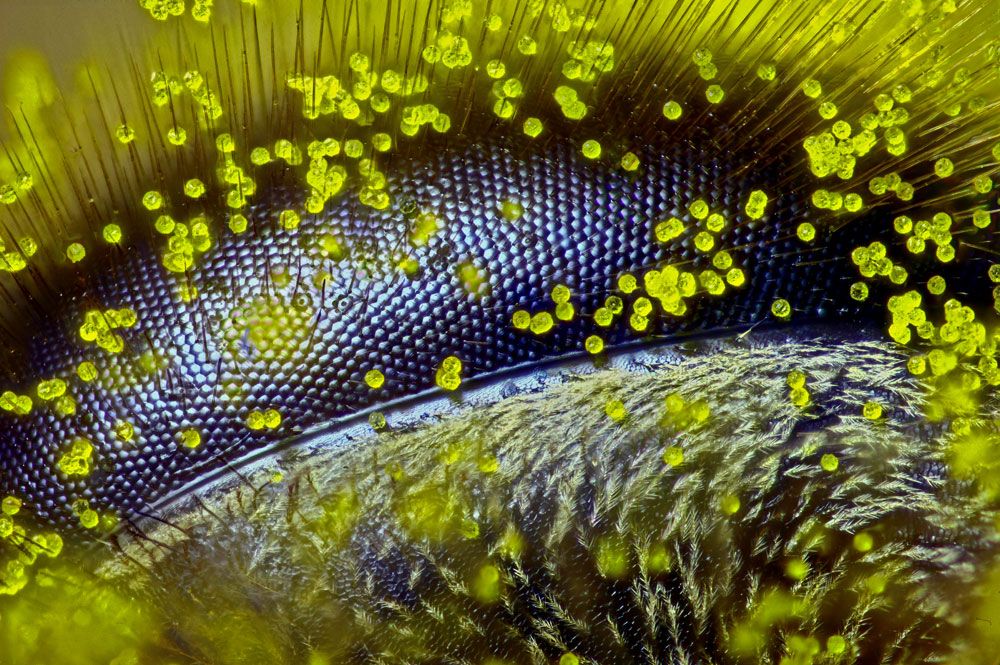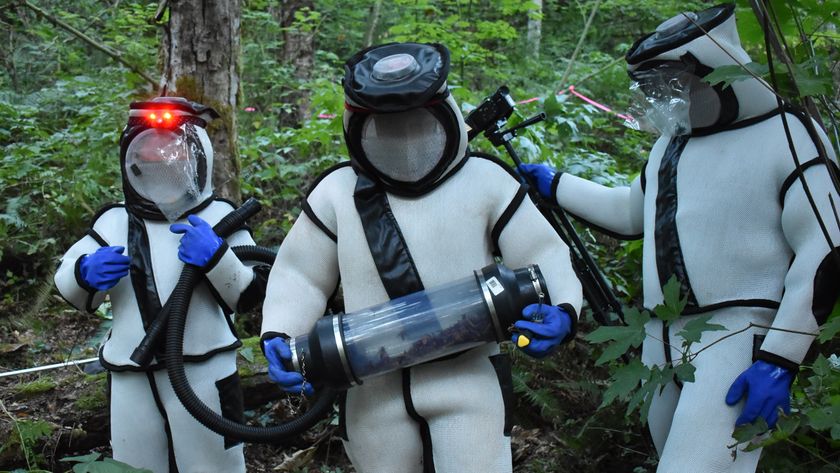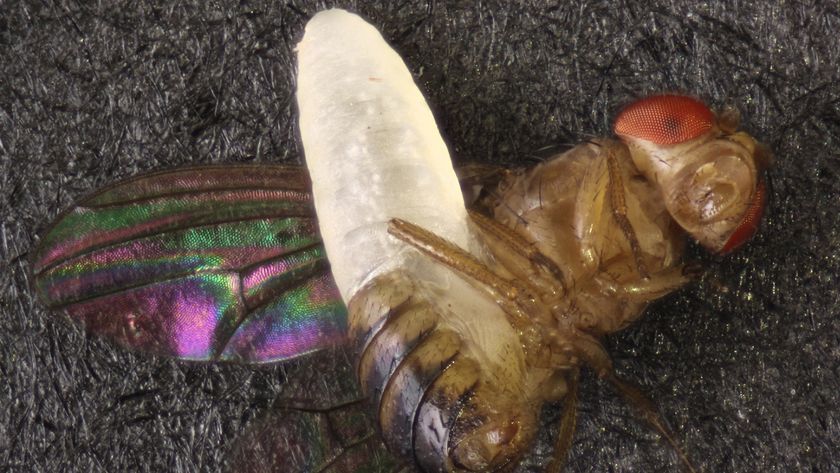(Bee)autiful Shot: Pollen-Covered Eyeball Wins 'Small World' Photo Contest

A photo contest that pays tribute to the tiny wonders of the world has a particularly buzzworthy winning image this year: a close-up of a bee's eye, covered in dandelion pollen.
More than 2,000 photographers submitted images to the 2015 Nikon Small World Photomicrography Competition, but just 20 of those images were chosen as winners. The first-place picture of the bee's eye was taken by Australian photomicrographer Ralph Grimm, who spent 4 hours mounting the eye under a microscope and focusing the instrument to capture the stunning shot.
Grimm, a high school teacher and former beekeeper, said that, in light of the ongoing collapse of bee colonies worldwide, he hopes his image is a reminder of the important role these pollinators play in local ecosystems. [In Photos: Bee Eyes and Meat-Eating Plants Light Up Micro-Photo Contest]
"In a way I feel as though this gives us a glimpse of the world through the eye of a bee. It's a subject of great sculptural beauty, but also a warning — that we should stay connected to our planet, listen to the little creatures like bees, and find a way to protect the earth that we all call home," Grimm said in a statement.
The contest's second-place winner offered a closer look at a rather unusual subject: a mouse colon. The shot, which was submitted by researchers at Stanford University School of Medicine in California, shows the rodent colon colonized with human microbiota. The striking colors and shapes in the image show the mouse's intestinal tissue covered in a dense layer of mucus that sits alongside a swirling colony of bacteria.
Finally, in third place was an image of a humped bladderwort (Utricularia gibba), a freshwater carnivorous plant, by Dr. Igor Siwanowicz of Howard Hughes Medical Institute in Virginia. The plant's name comes from the bladderlike trap it uses to catch the small organisms it consumes as prey. Siwanowicz's image shows a super close-up view of the intake of this trap.
In addition to the three top-placing winners, Nikon also awarded top spots to 17 other contestants for their striking images, including a photo of the itsy-bitsy suction cups of a diving beetle and the protective crystals that formed on a witch hazel plant. Last year, the winning image in the contest was of a rotifer — one of the tiniest creatures in the animal kingdom.
Sign up for the Live Science daily newsletter now
Get the world’s most fascinating discoveries delivered straight to your inbox.
Twelve entrants won honorable mentions and 56 more were labeled "Images of Distinction" by Nikon's panel of judges, which included photo and science editors, the head of Harvard University's Systems Biology Department and an investigator with the National Institute of Biomedical Imaging and Engineering.
The winning images from the contest will be featured in an upcoming calendar and will be on exhibit in the United States as part of a national museum tour. You can browse all of the images that have won first place in the photomicrography competition since 1976 on Nikon's Small World website.
Follow Elizabeth Palermo @techEpalermo. Follow Live Science @livescience, Facebook & Google+. Original article on Live Science.

Elizabeth is a former Live Science associate editor and current director of audience development at the Chamber of Commerce. She graduated with a bachelor of arts degree from George Washington University. Elizabeth has traveled throughout the Americas, studying political systems and indigenous cultures and teaching English to students of all ages.











